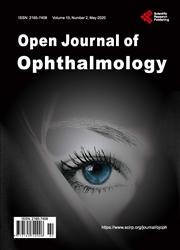Pediatric Traumatic Cataracts at a Tertiary Eye Center in Indonesia
引用次数: 3
Abstract
Background: Traumatic cataract is the leading cause of significant monocular visual impairment in children. The cause of this type of cataract is preventable penetrating or blunt ocular injury. Lens extraction can improve the visual acuity but it also depends on the extent of the injury to other ocular structures. Objective: To describe the features of pediatric traumatic cataract presenting at a tertiary eye center in Indonesia. Methods: This study is a descriptive study and the data were collected retrospectively from the medical records of the patients who were diagnosed as pediatric traumatic cataract over the period of January 1st 2019 to December 31st 2019. Demographic data, trauma characteristics, clinical features, management, and pre- and post-operative Best Corrected Visual Acuity (BCVA) were reviewed retrospectively. Results: A total of 37 patients were diagnosed as pediatric traumatic cataract. Among these patients, 78.38% were boys, with the mean age of 9.14 ± 3.77 years old. Open globe injury was the mechanism of injury for 54.05% patients. Besides lens aspiration, additional procedures were membranectomy, anterior vitrectomy, primary posterior capsulotomy, and synechiolysis. Eighty-one percent patients had unilateral blindness preoperatively and 23.80% patients still had unilateral blindness on three months of follow-up. Conclusion: In pediatric patients, traumatic cataract occurred predominantly in boys while playing outside the house. The children who had ocular trauma still have the risk of blindness even after the surgery. Trauma prevention and avoidance by adult supervision when children engage in outdoor play activity are necessary.印度尼西亚三级眼科中心的儿童创伤性白内障
背景:外伤性白内障是儿童单眼视力损害的主要原因。这种类型的白内障的原因是可以预防的穿透性或钝性眼损伤。晶状体摘出可以提高视力,但也取决于对眼部其他组织的损伤程度。目的:描述印尼三级眼科中心儿童外伤性白内障的特点。方法:本研究为描述性研究,回顾性收集2019年1月1日至2019年12月31日诊断为儿童外伤性白内障患者的病历资料。回顾性回顾患者的人口学资料、创伤特征、临床特征、处理及手术前后最佳矫正视力(BCVA)。结果:37例患儿被诊断为小儿外伤性白内障。其中男孩占78.38%,平均年龄9.14±3.77岁。54.05%的患者损伤机制为开放球损伤。除晶状体抽吸外,其他手术包括膜切除术、前玻璃体切除术、原发性后囊切除术和关节溶解术。术前单侧失明占81%,随访3个月仍有23.80%的患者单侧失明。结论:在儿童患者中,外伤性白内障主要发生在男孩外出玩耍时。有眼外伤的儿童即使在手术后仍有失明的危险。儿童进行户外游戏活动时,有必要在成人的监督下预防和避免创伤。
本文章由计算机程序翻译,如有差异,请以英文原文为准。
求助全文
约1分钟内获得全文
求助全文

 求助内容:
求助内容: 应助结果提醒方式:
应助结果提醒方式:


